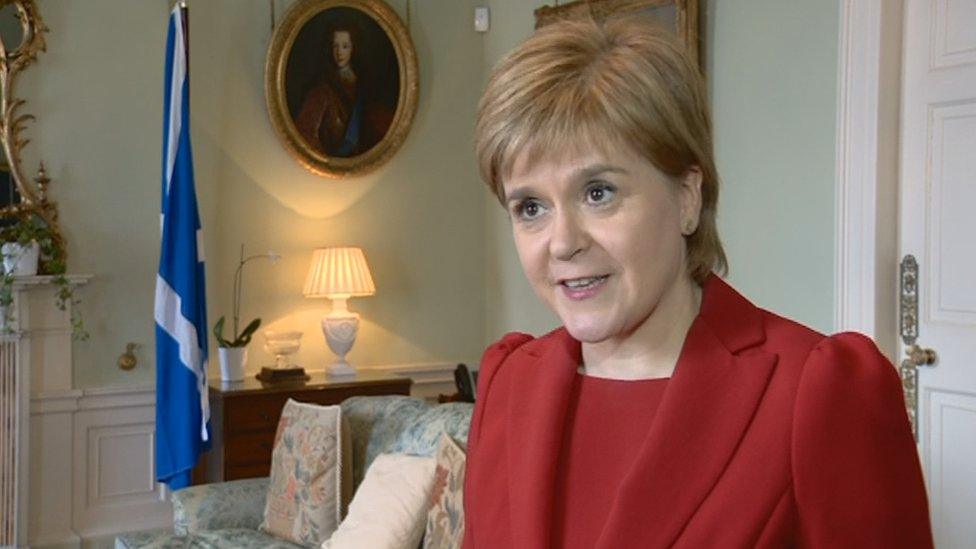Election 2017: Scottish battleground seats
- Published
With the UK very suddenly moving towards a general election, Scotland's political parties are scrambling to select candidates and fire up their campaign machinery. So, where are the target seats? Here, I pick out some to watch.

Scottish Conservatives
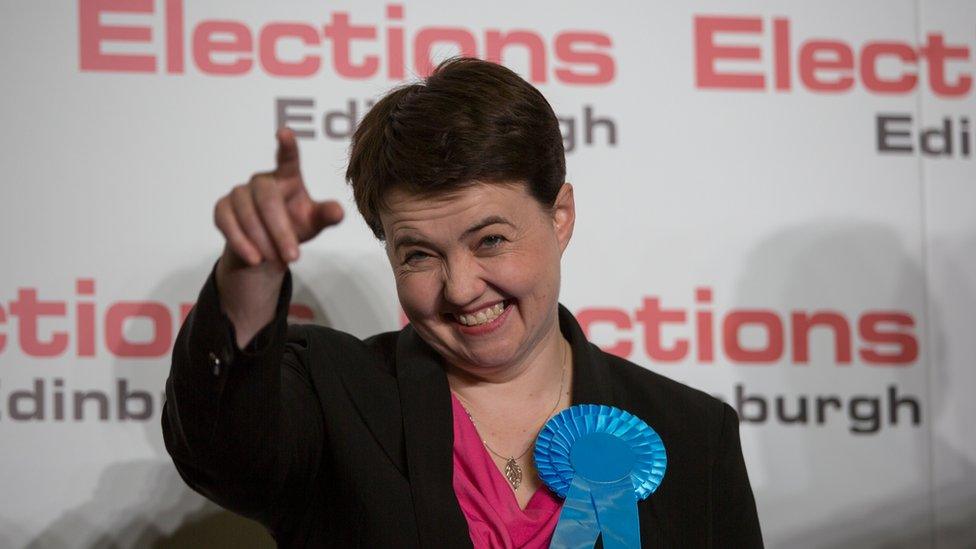
Ruth Davidson will aim for her Conservatives to continue the momentum they built in the 2016 Holyrood elections
The Conservatives called this election, and go into it with some momentum on their side after an improved showing in the 2016 Holyrood elections. So they must have some ideas about where they hope to pick up seats.
The Tories are traditionally strong in the Borders, and will have their eye on a few constituencies there.
Top of the list will be BERWICKSHIRE, ROXBURGH AND SELKIRK, where the SNP's Calum Kerr has a narrow majority of 328. In 2015 that was an SNP gain from the Lib Dems, but with former Scottish Secretary Michael Moore out of the picture it should be a straight fight between the Tories and SNP.
DUMFRIES & GALLOWAY could be a similar SNP contest, despite being an SNP gain from Labour in 2015 - Richard Arkless is defending a larger majority there, of 6,500, but the Tory and Labour vote was fairly split. If unionist voters coalesce around one or the other, they could challenge the SNP.
As well as the Borders - and perhaps Perthshire - the Tories have been looking strong in the North East. Alexander Burnett won a Holyrood constituency seat in ABERDEENSHIRE WEST in 2016, alongside four colleagues on the regional list.
Mr Burnett trailed SNP member Stuart Donaldson by 7,000 votes in the corresponding Westminster constituency in 2015; a lot will depend on where local Lib Dem votes go, as this was formerly a Liberal seat.
The Tories may look to capitalise on some localised enthusiasm for Brexit in the North East, especially in coastal communities; ward-level data show some districts in Banffshire were outright Leave supporters. They may look to exploit that, although Eilidh Whiteford has an imposing 14,000 majority in Banff and Buchan.
A more left-field pick might be MORAY, seat of SNP deputy leader Angus Robertson. He has a majority of 9,000, but the region had the tightest result of any Scottish area in the EU referendum. There was a closely-fought battle over the seat in 2016, with Richard Lochhead holding on in the face of a big swing to the Tories.
The key to these seats for the Tories will be to hammer away at the twin constitutional issues, to hoover up Brexiteer and Unionist votes alike.

Scottish Labour
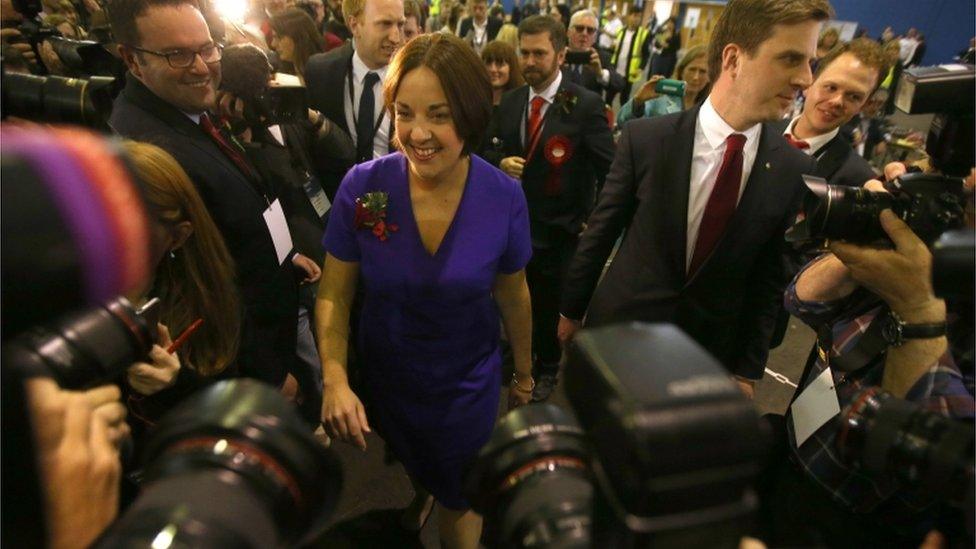
Labour have not had the best time at recent elections
Of all the parties, Labour probably relish this election the least. They insist they are up for the fight, despite at best tepid enthusiasm for Jeremy Corbyn's leadership in the Scottish party.
The possible silver lining of Labour's implosion in 2015 is that in the coming vote, they will be able to focus their resources on winnable target seats, rather than mounting dozens of defences. Also, they only need to win one seat to prevent themselves going backwards.
To start there, the party will devote plenty of effort to keeping Ian Murray in EDINBURGH SOUTH. They actually gained a Holyrood seat in the area in 2016, so will go into the fight with some optimism.
They might look to take back GLASGOW EAST, capitalising on the fact incumbent MP Natalie McGarry didn't last long as an SNP representative, having the whip withdrawn amid a police investigation. Ms McGarry took the seat from Margaret Curran with a majority of 10,000, but the fight will be very different in 2017.
Labour may also consider constituencies they held in the Holyrood election; the SNP have a stonking majority in West Dunbartonshire where Jackie Baillie triumphed in 2016 (largely under her own steam rather than the party banner), but George Kerevan's seat in EAST LOTHIAN might look more of a fair fight after Iain Gray's win in the corresponding Holyrood race.
The choice of candidates will be big for Labour - will the likes of Ms Curran come back to fight again? A well-known local campaigner could be key for Labour in these seats.

Scottish Lib Dems
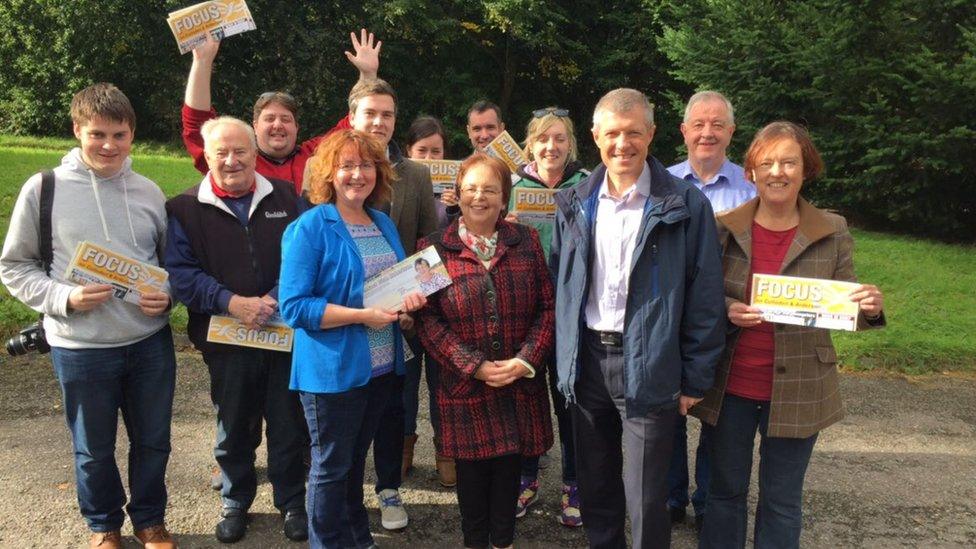
The Lib Dems have had some by-election successes in the Highlands
The Lib Dems had a terrible night at the 2015 elections, which was almost masked by Labour's collapse; they went from 11 seats in Scotland to one, amid a UK-wide backlash over their Westminster coalition with the Tories.
Willie Rennie's party insist that was a one-off election, and have been given fresh hope by some by-election successes. An election focused on Brexit is ideal for their current campaigning stance.
First and foremost they will look to pick up seats they lost in 2015, with EDINBURGH WEST probably top of the list. They lost out there by 3,210 votes, but the winning candidate, Michelle Thomson, ended up sitting as an independent after a police investigation.
The Lib Dems exploited this to win the corresponding Holyrood seat in 2016, and will be keen to continue that momentum in June.
They will also look to NORTH EAST FIFE, formerly a Lib Dem stronghold at Westminster and which Mr Rennie himself captured in the Scottish Parliament race. The SNP's Stephen Gethins holds a majority of 4,344 there, but will face a challenge from the Liberals.
CAITHNESS, SUTHERLAND & EASTER ROSS, which Paul Monaghan gained for the SNP with a majority of 3,844 in 2015, will also be a target in light of two by-election successes on Highland Council in the intervening years.
And with former MP Jo Swinson seeking, external a comeback in DUNBARTONSHIRE EAST, where John Nicolson is defending one of the slimmer majorities in the country (of 2,167 votes), the Lib Dems may fancy their chances there too.
The key for the Lib Dems will be to capitalise on their pro-European credentials, hoping to home in on anti-Brexit votes in any area with a high Remain vote.

SNP

The SNP's main aim will be to hang on to all 56 seats they won in 2015
For the SNP, obviously the election is mainly an issue of defending existing seats - but they might fancy taking a run at any of the three they missed out on in 2015.
Labour look particularly vulnerable, although Mr Murray did increase his share of the vote in EDINBURGH SOUTH last time out; Labour will fight hard to keep him there.
Equally the SNP will take a shot at Tory David Mundell's seat in DUMFRIESSHIRE, CLYDESDALE & TWEEDDALE. The Scottish secretary held the seat by a margin of 798 in 2015, and some have been quick to point out that the Green candidate took 839 votes. Could they stand aside, external in the spirit of independence and allow an anti-Tory candidate a free run?
The problem with that theory is that making the seat a referendum on independence will benefit Mr Mundell as much as it will harm him - he would likely pick up as many Labour votes as the SNP would gain Green ones.
The other splash of a colour other than yellow on the electoral map is in ORKNEY & SHETLAND, where the Lib Dems are traditionally dominant.
However, once again it's all about the candidate - the SNP will look to run a focused local campaign based on Alistair Carmichael's troubles over a leaked memo in the previous campaign. Campaigners failed to unseat him in court, so the SNP will try their hardest to do so at the ballot box.
- Published19 April 2017
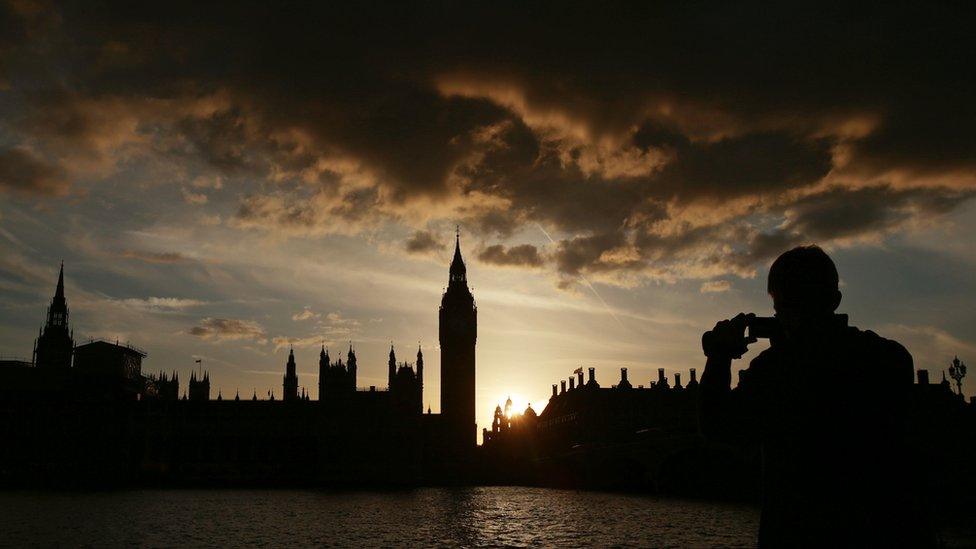
- Published19 April 2017
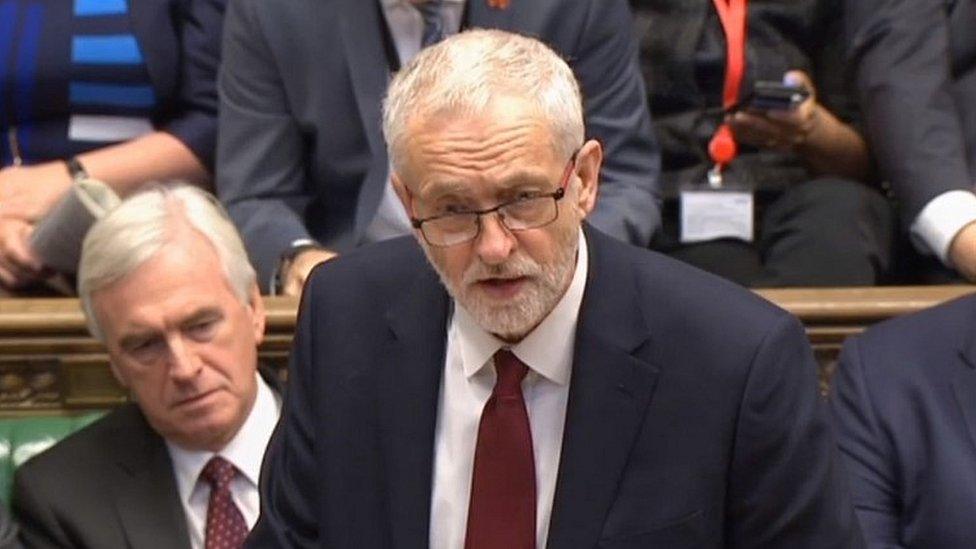
- Published18 April 2017
